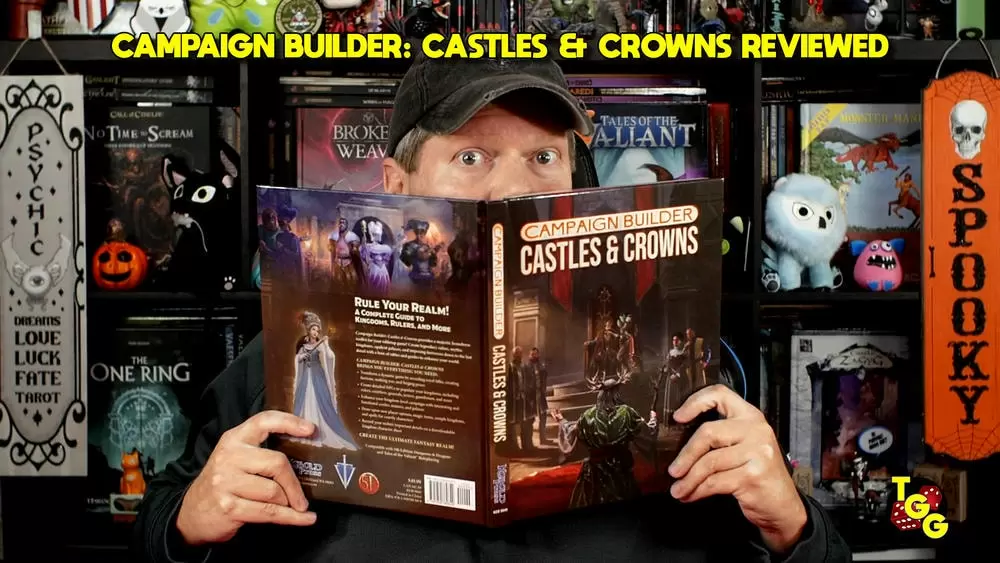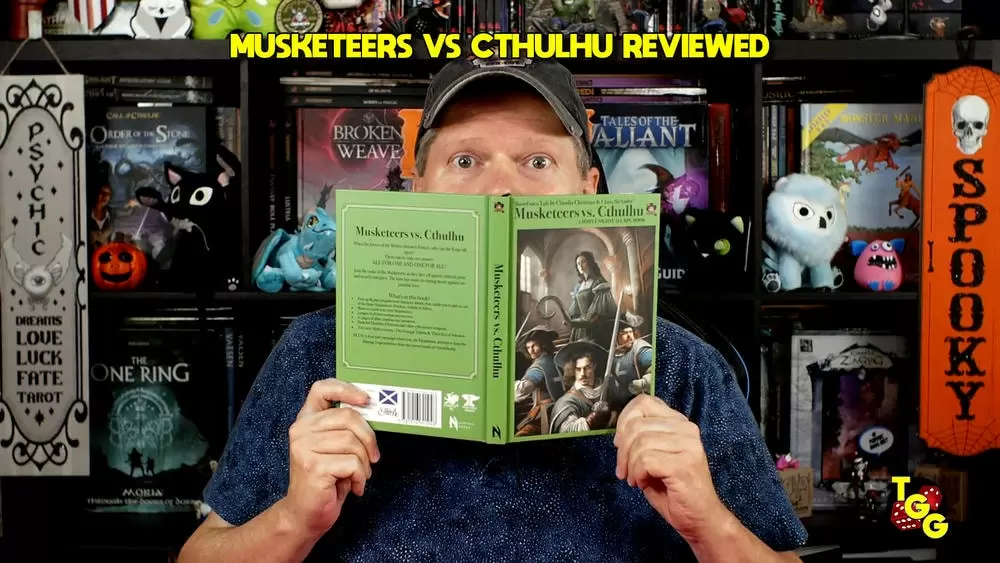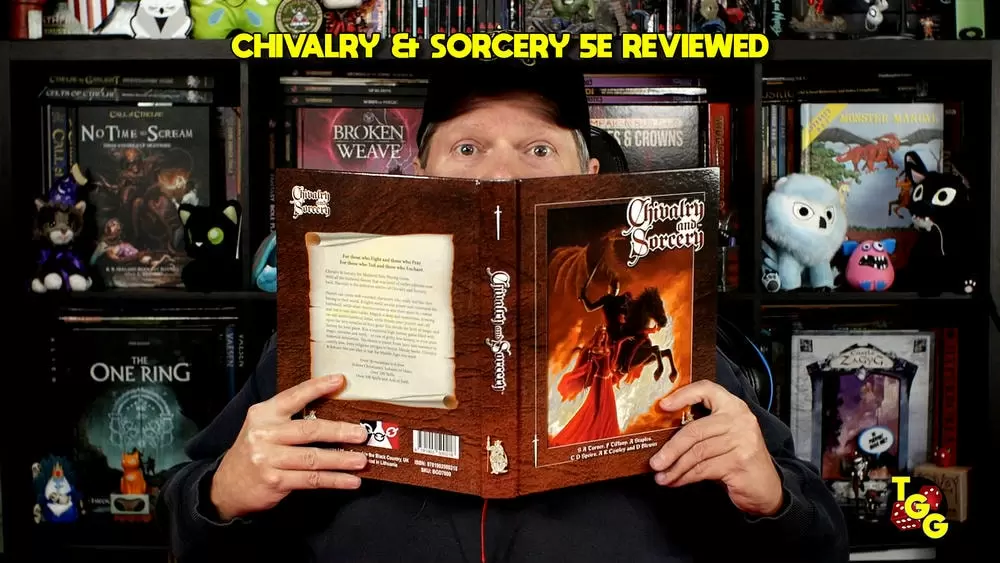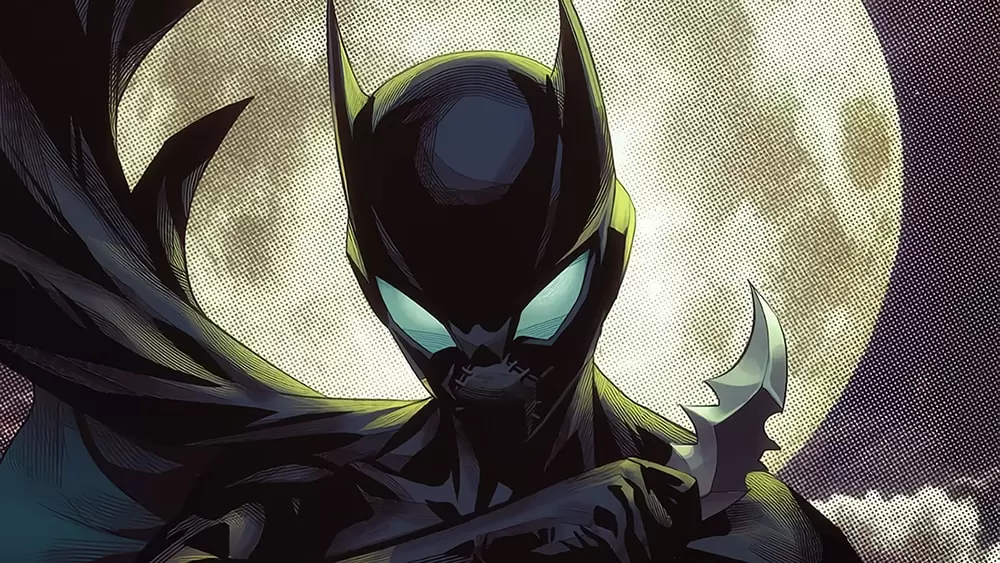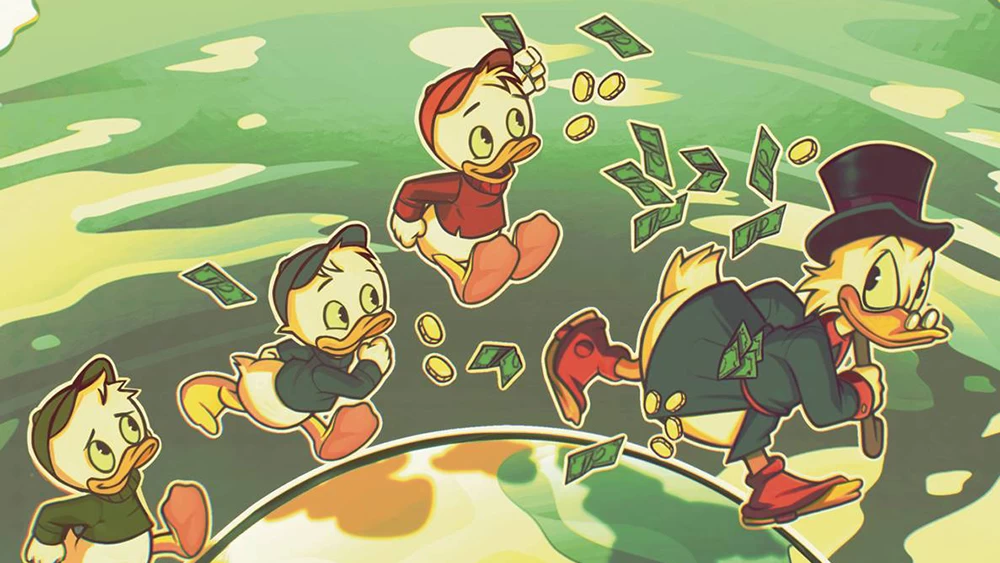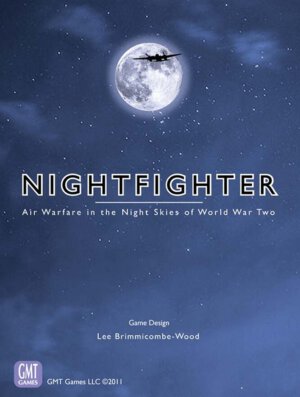
Publisher: GMT Games
Designer: Lee Brimmicombe-Wood
Artists: Lee Brimmicombe-Wood, Rodger B. MacGowan, and Ian Wedge
Year: 2011
Players: One or two players (one player is the umpire)
Ages: 13+
Playing Time: 60 Minutes
Genre: Secret plotting WWII air combat wargame
Retail Price: $55.00
The simulation of nighttime air defense against bombers in WWII. Nightfighter allows you to play with a number of different aircraft on both sides of the war. The core of the game demonstrates how bombing defense systems evolved throughout the war and beyond. This was quite an ambitious undertaking.
Nightfighter is for all practical purposes a solitaire game that requires two people to play. The second player acts as the “Umpire”, and controls the bombers or other aircraft that are invading the player’s territory. The decisions made by the Umpire are few however, they mainly keep track of the actual locations of the bombers and lets the player know when they actually find one. In essence, they act as a sort of GM.
The game comes with a player’s map and a separate smaller Umpire’s map, both with numbered hexes. Each hex represents about a square mile of air space. During a game the Umpire hides his map behind a four page width GM screen that contains a lot of the charts that you will need while playing. There are also two sheets of counters of different sizes (for the player’s map or umpire’s map).
Nightfighter is designed to be learned in stages. The rulebook takes you through the basics, then tells you to play scenario one. Another page or two of rules, then scenario two, and so on. It is the traditional learning by 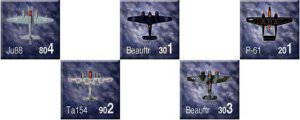
Setup is pretty easy. The scenarios describe exactly which fighters and bomber counters that you need. It might take some searching through the counters unless you keep them organized, but you should be ready to go in less than five minutes.
There are ten phases to each turn, this breaks everything into more manageable chunks as otherwise you would spend a lot of time wondering what you’re supposed to be doing next.
The first few phases are movement and entering of the bombers into the playing area. The umpire has a few options as to when to bring his bombers onto the board. They will generally appear one at a time along the entry end of the board. The hex column that each bomber will be travelling down is generated randomly by pulling a chit. The only real choice the umpire has is that they can delay the bomber entering the field up to two turns. Other than this the bombers each enter on the turns specified in the scenario instructions. The player then moves his fighter(s) toward the entry end of the player board, and the quest to find the hidden bombers is on.
Now each of the nighfighter aircraft and bombers capabilities are detailed in the charts on the GM screen. The charts describe the movement, firepower, damage the aircraft can take, and equipment available, as well as the date the aircraft went into service. You will be referring to these charts often as you play.
One of the really interesting aspects of the game is the feeling of history you experience when playing. The scenarios progress in a somewhat linear fashion, so the first scenario has your single fighter trying to track down a bomber using visual spotting only. The scenario is rated “impossible” and it really is. It has a dual purpose to both teach you how to play a basic game, and give you a sense of the futility the pilots must have experienced 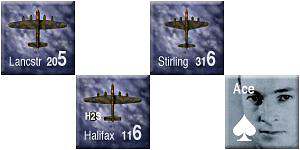
You skip many of the turn phases in the first few scenarios, you will learn these later. The next concept introduced is ground radar searches. For this, you pick a hex anywhere on the board and place your radar search token there. There are different types of radar that all have different capabilities. In essence, the umpire will signal a contact (but not where the contact is) if a bomber is within the search radius of the radar, or add a counter showing the general direction the closest bomber is in. Using this method you can eventually pin down the general location of a bomber, but in order to attack you need to maneuver your nightfighter into the same hex as the bomber, while travelling in the same direction, and have a “Tally” on the bomber.
Tallying a bomber happens during the Tally phase. Once your aircraft is close enough you can have your pilot attempt to tally the bomber it is chasing. You roll a certain number of dice based on different modifiers. If you roll a die that matches the tally number on the bomber (which are all conveniently numbered from one to six), then the bomber is tallied and you can move in for the attack.
This is all pretty tough because you have to get yourself into position and get the tally before the bomber moves off of the board. There is some skill and a lot of luck involved.
In later scenarios you will learn to use searchlights, Aircraft equipped with their own radar, avoid flak, and utilize improved ground radar. These were fairly to master, and soon you will be playing all ten phases of every turn.
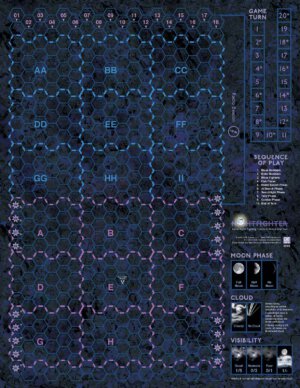
The gang at GMT were also nice enough to include a complete campaign book with pilot rosters and new scenarios, campaign rules, awards, experience levels, and everything you need for a great campaign. The scenarios themselves all have different variants, so there is no lack of games that you can experience.
This game to me seems perfectly suited for adaptation to a PC based game. The umpire could easily be replaced by a simple AI. For me this would be ideal. The game as is requires finding someone to play the umpire and it can be a pretty boring game for the umpire. You cannot win, you can only help the player to lose. The umpire does get to control a few “Intruder” aircraft in a scenario, which are bomber escorts that try to shoot down your nightfighters, but even this gets dull. There are many people who really enjoy the GM role, and would love to play the umpire, but I’m past that gaming phase and prefer to actually play.
It is fairly simple to play a scenario, then switch and umpire for the other player. They really don’t take long to play, so you could get in two games in two hours with each player taking a turn as umpire, so it isn’t a game breaker.
The rules did eventually get too detailed for me. I don’t like having to try to remember a bunch of little rules that only apply in certain circumstances, and paging through the rulebook became a chore. It really isn’t a seriously complex game, but having to go back and refer to which aircraft has which radar, and which bombers can jam them, and when to roll for responses, and which modifiers to apply gave me a headache.
Nightfighter is a good game, it really teaches and simulates well. I know more about WWII aircraft, radar, and equipment than I ever knew before. It can be a good time for the player, and those who enjoy playing the umpire role. It wasn’t really for me, as eventually the rules lost me and I’m not big into “umpiring” anymore, but for those who are interested in the history and enjoy the umpire/player roles this game would be a great buy.
[rwp-review id=”0″]
- A Dungeon Delve for Kids?: A Review of Dungeon! - Oct 24, 2022
- Better, Stronger, Faster | Descent: Journeys in the Dark Second Edition Reviewed - Oct 23, 2022
- Your Planet is Doomed!: Invasion from Outer Space Reviewed - Oct 22, 2022



